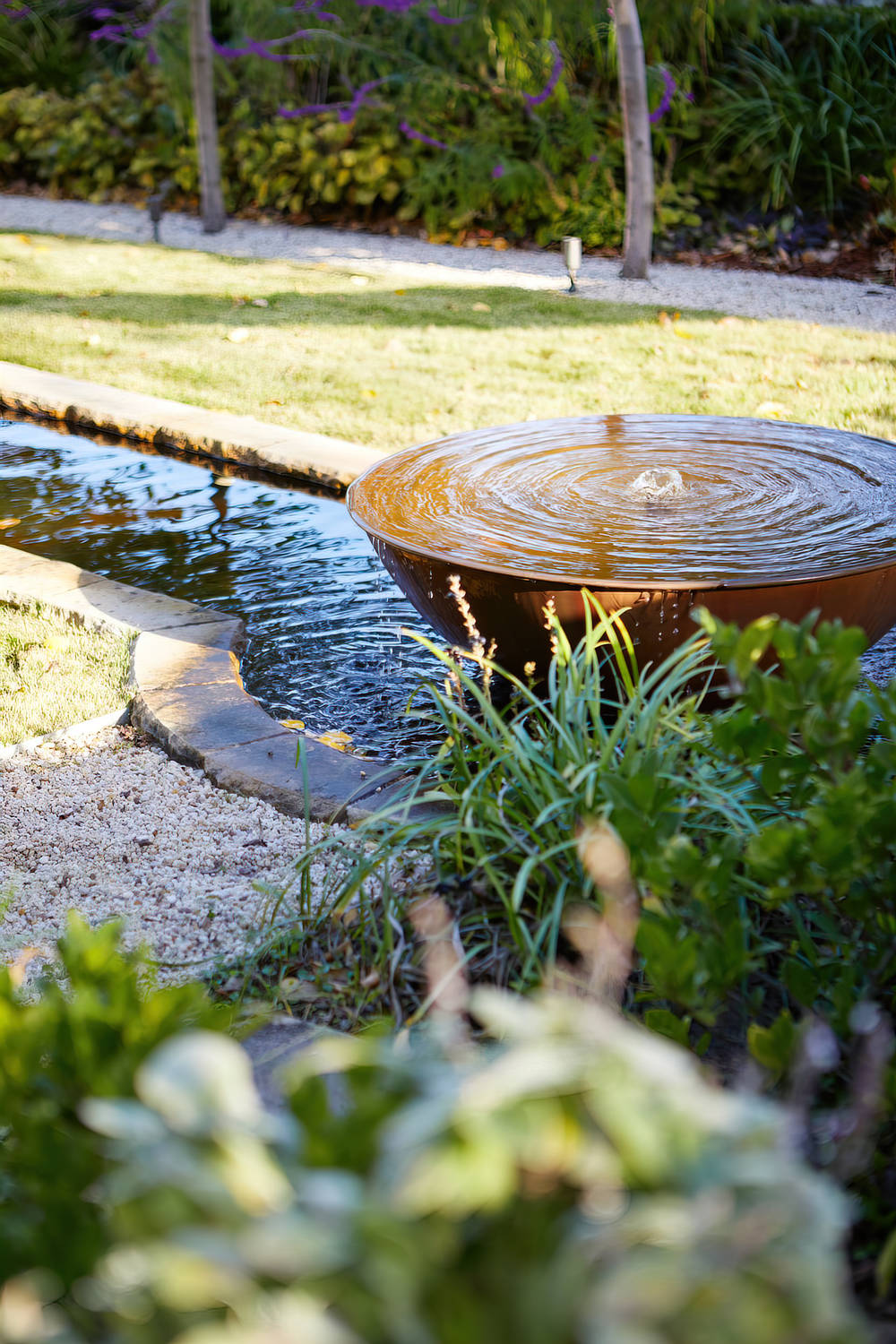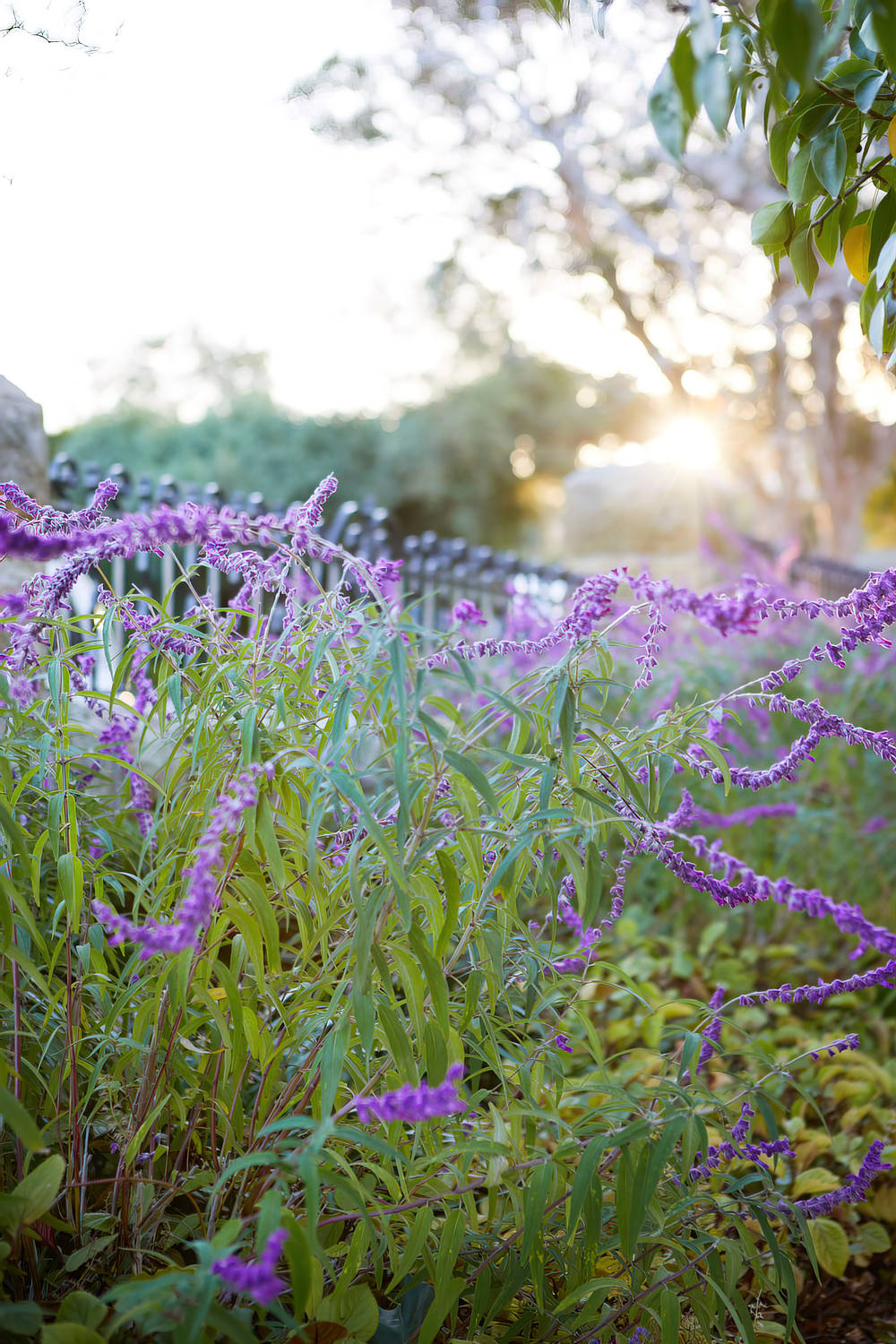A garden can be so much more than a place for plants and flowers, it can be home to insects, lizards, birds and all manner of native animals.
Introducing water to a garden is a sure-fire way to get wildlife attracted to your space as it brings in every type of animal especially birds and frogs. I have designed all sizes of water feature and from the smallest water bowl up to large scale dams and natural wildlife ponds in-between each one quickly heralds the arrival of wildlife. In my own garden at the end of the alfresco dining area a simple pot that fills and spills water over the edges is a great spot to watch birds come and take a bath to cool off.
If thinking of introducing a wildlife pond you need to consider a few things for the wildlife that will visit it – can they easily get in and out of the water? Shallow sides and logs for entry and exit work really well, it’s also a good idea to have perches for birds to sit on surrounding the pond.
How deep do you want it to be, or can it be? This will help regulate temperature, minimise evaporation and have an impact on the variety of plants you can grow in the water, which not only look nice but also work as food and shelter for animals and fish.
How much maintenance can you give your pond and the plants within it? A simple lined hole in the ground will quickly turn into a mosquito breeding ground so you will need to keep the water moving with a pump, you can move on up from there to skimmer boxes to catch debris and U.V. filters for clear water – it all depends how involved you want to get and how much time you will be spending using the area and taking it all in.
You will also need to confirm with your local council regarding compliance as far as building and swimming pool safety barrier regulations go – it sounds a bit over the top however water safety must be considered.
The introduction of wildlife doesn’t have to come from water, a simple bug hotel is a great way to get children involved in the garden and basically consists of various places for insects to nest and breed, hollow bamboo canes, old pieces of hardwood with holes drilled in them and bundles of coco fibre work well and can make an excellent garden feature if you put a bit of thought into the design. Similar to the bug hotel is space for lizards to breed and feel safe and this can be achieved in the most simple of ways with a pile of sticks!
As well as a place to live wildlife requires a source of food and native plants are a great way to do this, they supply interest to you and pollen, seeds and fruits for the local wildlife. If you want to support and protect your local wildlife then searching your councils website for their list of endemic plant species is a great place to start. Endemic plants are those that have evolved over millions of years within your local area so you know they will be successful, easy to grow and not become weeds in the surrounding bushland regions, you also get the guarantee the food they produce suits the local wildlife as well.
For pollinators, bugs and insects I have a small patch of meadow flowers that I grew from seed, mine contain a wide variety of plants both annual and perennial including companion plants such as marigolds as its close to the veggie patch. If you wanted you could take the endemic approach, speaking with experts such as the wildflower society of Western Australia to finely hone your plant list for maximum benefits and insect alluring power!
Bringing wildlife into the garden doesn’t mean you have to have an all ‘wildlife garden’, by simply introducing a small amount of water, a place to rest and some food you will attract wildlife and this addition to the garden adds a whole new level of enjoyment to the space.


